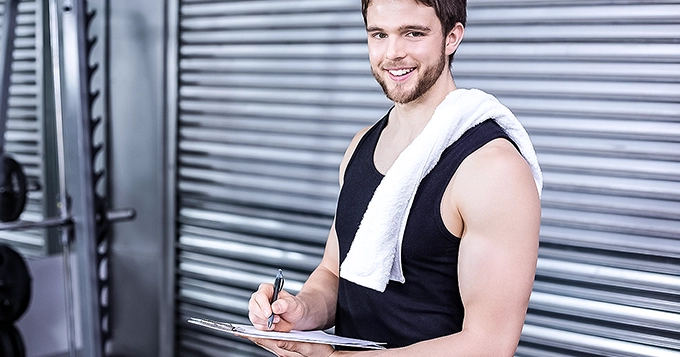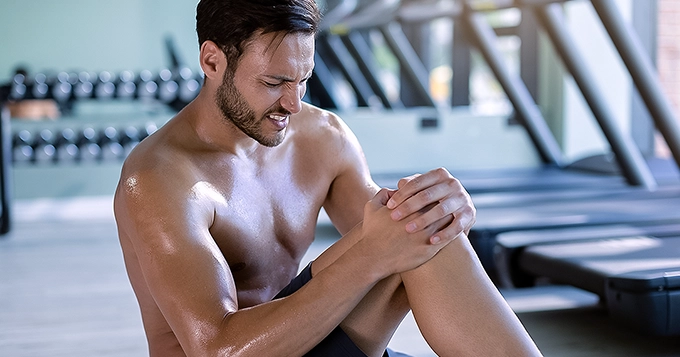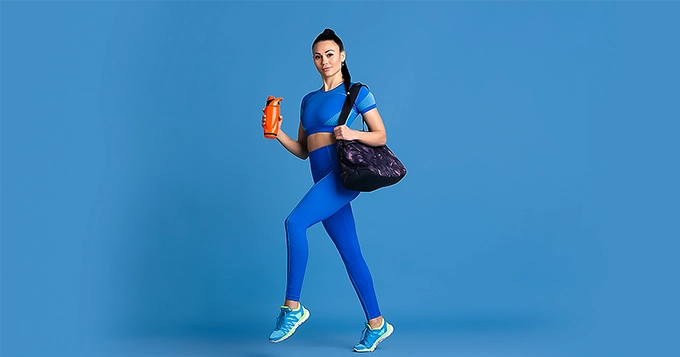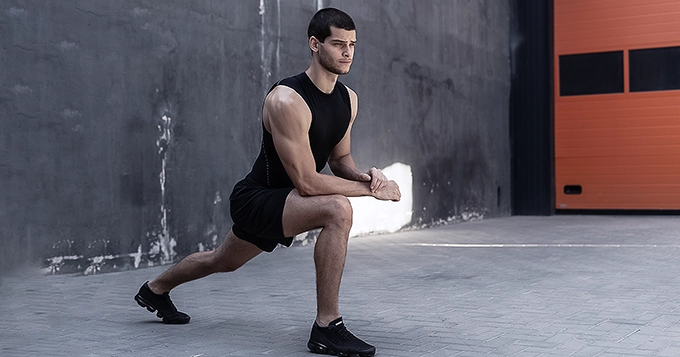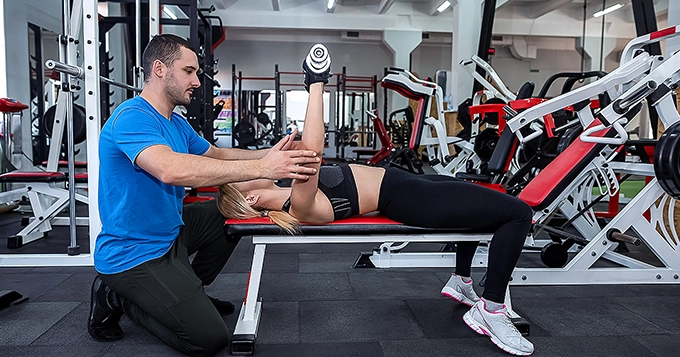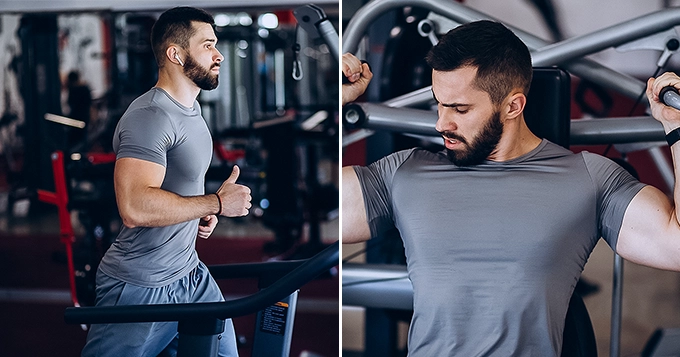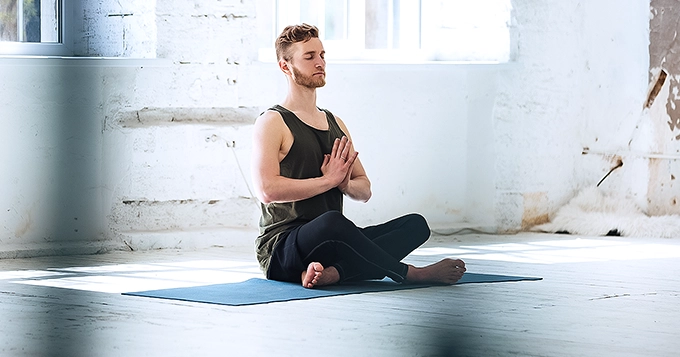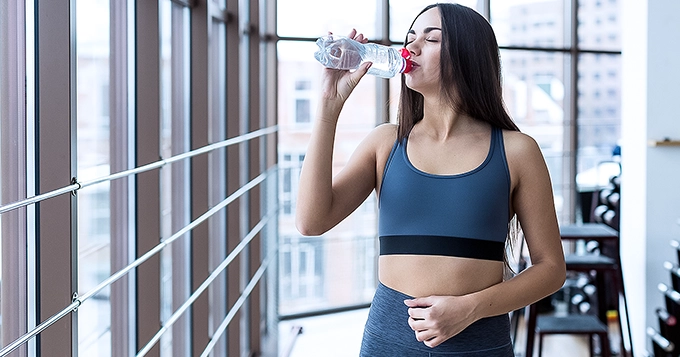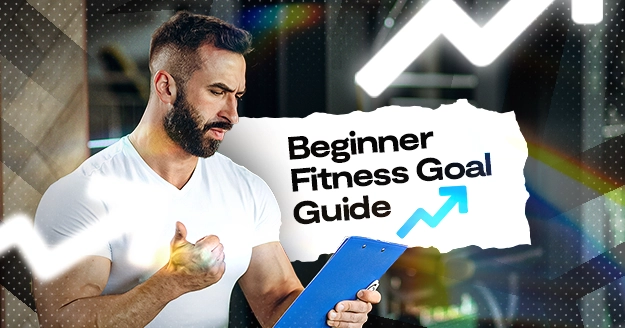Are you excited to hit the gym? Before you do, make sure you have your checklist for preventing injuries during gym workouts. Let’s dive in.
Why is Gym Safety Important?
Gym safety is crucial for several reasons:
- Injury Prevention: The most immediate reason for prioritizing gym safety is to prevent injuries. Exercise, especially in a gym setting where equipment and weights are involved, carries inherent risks. Proper safety measures help minimize these risks and protect individuals from accidents such as strains, sprains, fractures, and more severe injuries.
- Long-Term Health: Consistent exercise is a cornerstone of good health, but injuries can disrupt fitness routines and deter individuals from maintaining an active lifestyle. By promoting gym safety, we encourage people to engage in regular exercise without fear of harm, thus supporting their long-term physical and mental well-being.
- Optimal Performance: Safety precautions not only prevent injuries but also enhance performance. When individuals feel safe and supported in their workout environment, they can focus more on proper form, technique, and intensity levels. This, in turn, leads to more effective workouts and better results.
- Reduced Liability: For gym owners and fitness professionals, prioritizing safety isn’t just about the well-being of clients—it’s also about mitigating liability. Establishing and enforcing safety protocols can help prevent accidents and potential legal issues associated with negligence or lack of proper precautions.
- Inclusivity and Accessibility: Creating a safe gym environment makes fitness more accessible to a broader range of individuals. When people feel confident in their ability to exercise safely, regardless of age, ability, or fitness level, they are more likely to participate in physical activity and enjoy its benefits.
- Promotion of Confidence: Feeling safe and supported in the gym fosters confidence. When individuals trust that their surroundings and equipment are safe, they’re more likely to challenge themselves, try new exercises, and push their limits—all of which contribute to personal growth and achievement.
- Positive Culture: A commitment to gym safety sets a positive tone and culture within fitness facilities. It demonstrates that the well-being of members and clients is a priority, fostering a sense of community and camaraderie among gym-goers.
How Common Are Gym Injuries?
Thousands of individuals experience gym injuries annually. In 2019, the U.S. Consumer Product Safety Commission reported that over 460,000 people were treated in emergency rooms for gym-related injuries. These injuries range from minor strains and sprains to more severe fractures and muscle tears.
While gyms strive to promote safety through proper equipment maintenance, staff training, and signage, accidents can still occur due to various factors such as improper form, overexertion, lack of supervision, or equipment malfunction. It’s essential for gym-goers to be aware of potential risks and take necessary precautions to minimize the likelihood of injury during workouts.
Checklist for Avoiding Injuries During Gym Sessions
-
1. Proper Attire
Wear proper clothes:
To stay cool and comfortable during workouts, opt for gym clothes made of breathable, quick-dry, moisture-wicking fabrics, and when selecting sports bras, aim for a snug fit that provides optimal compression without causing discomfort or digging into your skin.
Additionally, prioritize lightweight clothing to prevent overheating. Heavy garments can lead to quicker fatigue, shorter workout sessions, and reduced overall efficiency.
Opting for high-stretch gym wear can improve mobility, comfort, and durability, reducing the risk of tearing during exercises involving bending or stretching.
If you prefer form-fitting gym attire, consider materials such as latex or spandex, which offer a flattering stretch fit while allowing freedom of movement.
Wear proper shoes:
When considering gym shoes, your choice depends on your workout activities.
For weightlifting, opt for trainers with minimal cushioning and a mostly flat sole. This design enhances balance and stability, which are crucial for lifting heavy weights. With a flat shoe, you can exert pressure through your big toe while spreading out the other toes, promoting stability.
However, for cardio exercises, opt for traditional running shoes with ample cushioning. These shoes provide necessary comfort and support, especially during high-intensity workouts, facilitating swift movement.
-
2. Warm-up
Once dressed appropriately, begin with warm-up exercises. Warming up before physical activity prepares you mentally and physically for your chosen endeavor.
By increasing your heart rate, warming up enhances blood flow, allowing more oxygen to reach your muscles, thereby optimizing their performance.
Moreover, a warm-up activates and primes the connections between your nerves and muscles, enhancing movement efficiency. Dynamic stretching during this phase also promotes increased flexibility, enhancing your range of motion.
How to do a warm-up?
For light physical activity, a typical warm-up duration is approximately 10 minutes. It encompasses light aerobic exercises and dynamic stretching movements tailored to the upcoming activity. Injury prevention exercises you can add to your warm-up routine:
- arm swings
- fast-paced side stepping
- fast-paced walking
- jogging on the spot
- lunges
- squats
- walking up and down stairs
-
3. Do your exercises while observing proper form
Maintaining proper form during physical activities is crucial, particularly during workouts or training sessions. Not only does proper form reduce the risk of injury, but it also enhances movement efficiency, boosts performance, and facilitates a full range of motion.
Posture and Joint Movements:
Maintaining good posture, especially in your spine, during exercises like squats, lunges, or stepping is crucial. Keep your back straight, shoulders pulled back, and pelvis in a neutral position to handle heavier weights without risking your spine. When lunging or stepping, ensure your knees stay at a 90-degree angle to prevent strain. Distribute your body weight evenly across your feet or slightly toward your heels to relieve pressure on your knees and patellar tendon.
When using machine-based exercises, proper posture remains essential. Whether it’s a leg press or leg extension, keep your back against the pad and drive the platform with your feet flat, distributing weight evenly. This protects your tendons and joints, much like maintaining a 90-degree knee angle during lunges.
Foot Placement:
Foot placement significantly affects lower-body exercises. Pay attention to how wide apart your feet are and their direction. Widening your stance and turning your feet outward places more stress on your inner thigh, while inward foot placement focuses more on the outer thigh, typically used in machine-based exercises.
Tempo:
The tempo of your movements in exercises is crucial for technique and safety. Avoid rushing through exercises, as it can compromise form and increase injury risk. Control both the concentric (muscle shortening) and eccentric (muscle lengthening) phases of each movement. A slow, controlled tempo is generally safest and most effective, with a typical recommendation of 2 to 4 seconds for lowering the weight and 1 to 3 seconds for lifting or pushing it.
Breathing:
Proper breathing is vital during weight training. Inhale during the work phase and exhale during the recovery phase. For instance, during a leg press, inhale before exerting force and exhale as you push the weight. Healthy individuals can employ a modified Valsalva maneuver for heavy lifting, involving controlled breath-holding to support the spine. However, individuals with heart or blood pressure conditions should consult a physician before attempting this technique.
-
4. Include Variety
Injury prevention workout involves avoiding repetitive motions that can lead to overuse injuries.
Incorporating variety into your workout routine not only prevents overuse injuries but also boosts fitness gains. By engaging in diverse exercises, you stimulate muscle growth, improve flexibility, and enhance cardiovascular health, avoiding plateaus.
Plus, switching up your routine keeps workouts exciting, preventing boredom and maintaining motivation for consistent exercise. Whether trying new strength training moves or exploring different fitness classes, embracing variety makes workouts more engaging and sustainable.
-
5. Cool down
Cooling down is equally essential. It helps maintain blood flow throughout the body. Suddenly stopping can lead to light-headedness as your heart rate and blood pressure drop rapidly.
To cool down after exercising, simply lower the intensity of the activity you’ve been engaged in. For instance, you can transition from:
- fast swim into an easy swim
- jog into a walk
- run into a jog
You can also add the following Injury prevention exercises to your cool down:
- Balance and stability exercises such as single-leg stands, heel-to-toe walks, and stability ball exercises
- Breathing and relaxation technique
- Foam rolling
- Mobility exercises such as hip circles and shoulder circles
Other checklists to keep in mind:
-
- Track your sessions, including reps, sets, intensity, and how you feel before, during, and after exercising.
- Hydration before, during, and after workout.
- Fuel your body correctly with healthy foods.
- Increase weights and intensity levels gradually over time. Avoid pushing yourself too much.
- Listen to your body. Stop immediately if you feel abnormal pain.
- Remember to rest. Incorporate rest days into your weekly routine.
